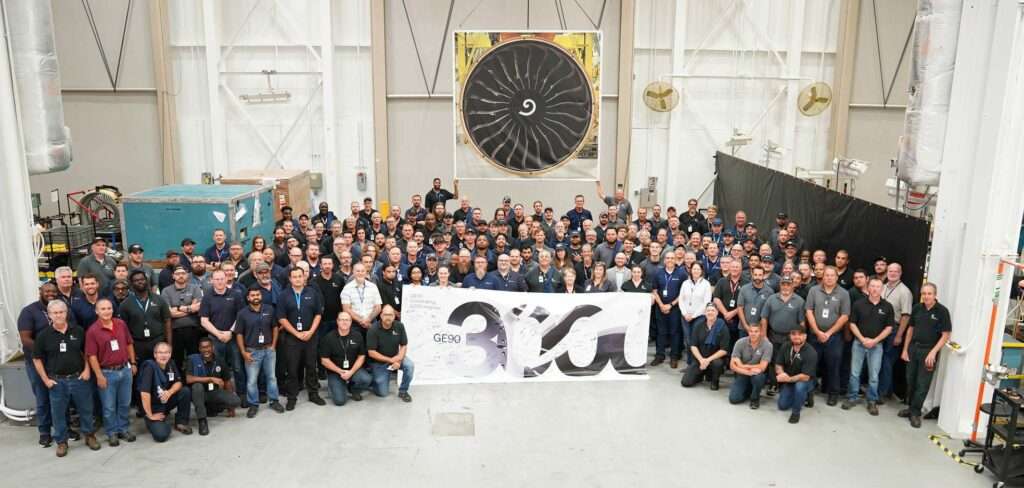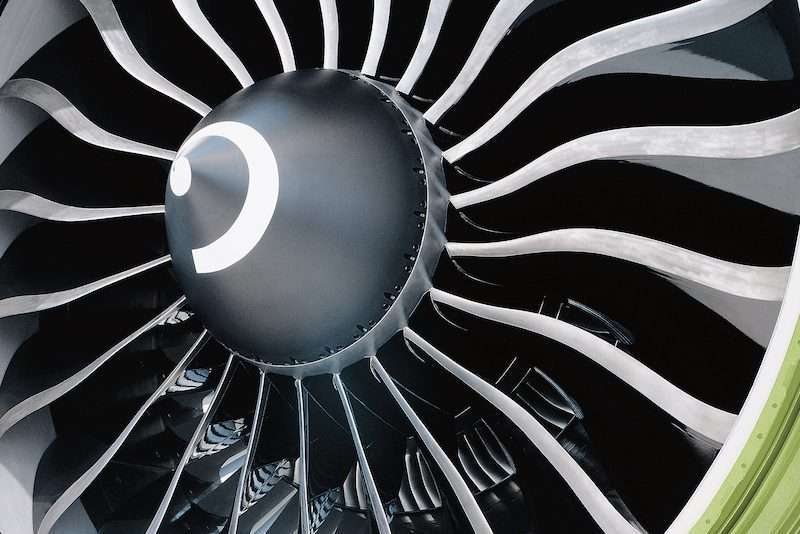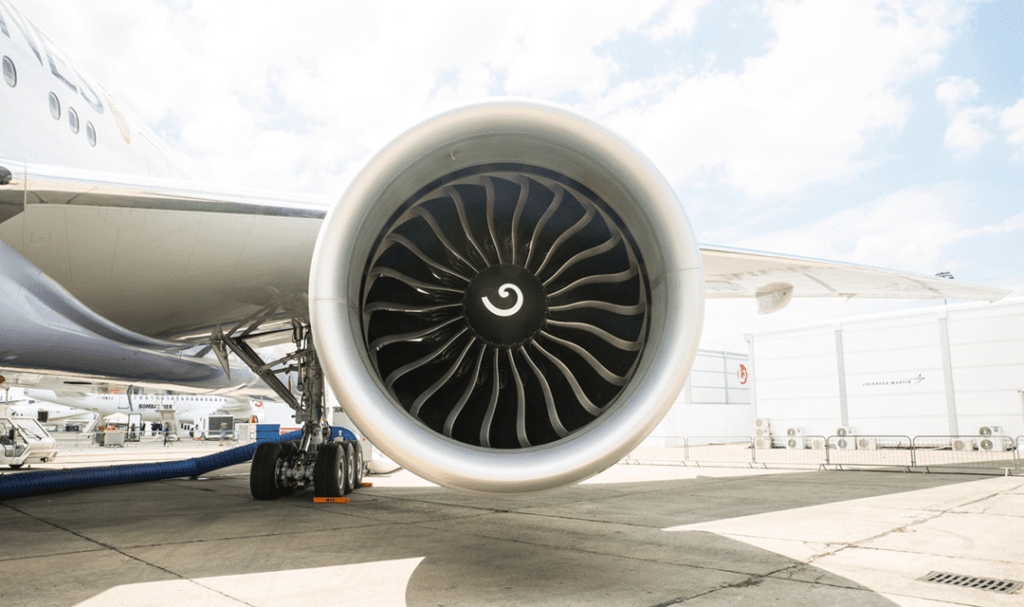GE Aerospace have announced that their GE90 engine series has achieved the milestone of the 3,000th unit delivered.
FedEx is going to get the honour of being the recipient of the 3,000th GE90 and GE Aerospace have been celebrating with a history of the series’ development.
30 years of GE90
Developed during the early 1990’s the move to develop the GE90 series was seen by some to be bold at the time, given the industries reliance on 4 engine commercial long haul aircraft, and the GE90 aimed at twin engine widebodies.
Powering the Boeing 777 family since the GE90 has been a strong product for GE Aviation for the past 30 years.

[monsterinsights_popular_posts_inline]
In part of the announcement from GE Aviation they outline a history of the programme. The engine was certified by the Federal Aviation Administration on February 2, 1995, and officially entered service with British Airways in November 1995.
However, by 1998, GE was behind in a competition with Rolls-Royce and Pratt & Whitney to power the Boeing 777. Some key airlines thought the GE90 was too expensive and its technology too risky to power passenger jets designed to fly over vast distances with only two engines.
The poor market demand led GE to delay certification of the next variant of the engine. At one point, then CEO Jack Welch was said to have declared, “The GE90 is dead, put a stake in its heart.”
A tough sell to start
Suffice to say things did not look great for the program. “Many thought that it wouldn’t even fly again,” says Nate Hoening, programme director for GE90. But in 1999, Jim McNerney, who was president at the time, doubled down.
First, the engineers designed a more capable compressor for the GE90. Then, armed with positive reviews about increased fuel efficiency from operators in the field, McNerney and his team went on a sales offensive.
They set about generating enthusiasm among potential airline customers for a new variant that would achieve 115,000 pounds of thrust. More thrust meant the engines could carry larger payloads longer distances.
After months of intense negotiations, Boeing finally agreed to make the GE90-115B turbofan the exclusive engine for its longer-range 777-300ER and 777-200LR jets.

“Ever since it went into service, the performance of the engine has been phenomenal,” says Hoening. “It’s become the standard for all wide-body engines.”
“So the fact that it started off with so many bumps — to have it progress, to have it mature, and then to have it become effectively the first generation of a long number of GE engines that have been based on its design — it’s just incredible.”
Keeping up with modern airliners
Hoening credits the GE Aerospace introduction of analytics-based maintenance in particular as a “game changer” in terms of helping customers improve the “time on wing” of their GE90 engines.
“With a normal aircraft, you schedule maintenance in an overnight window. With a GE90-powered 777, there’s never an overnight window,” he says.
“You’re always flying overseas from one place to the next, where you have a couple-hour layover and fly again. So the reliability and durability of these products has become so much more important.”
Working closely with the airlines to monitor the engines on a 24/7 basis “helps make sure that they’re proactive” when it comes to timing repairs and engine overhauls.
“By doing that, we’ve been able to learn more and help keep the majority of engines on wing, because we use the data to actually drive the maintenance,” he says.
Hoening sees sustainable aviation fuel (SAF) as the next big step in further reducing the GE90’s carbon footprint. Earlier this year, a Boeing 777-300ER operated by the airline Emirates completed the first test flight in the Middle East and Africa using 100% SAF to power one of its two GE90 engines.
“With a lot of these wide-bodies, sustainable aviation fuel will be a big part of meeting sustainability goals,” he says.

Click the banner to subscribe to our weekly newsleter.









